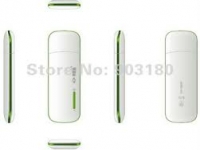The WiGig high-speed wireless standard will power a new wireless version of USB through a deal between the Wi-Fi Alliance and the USB Implementers Forum.
The Wi-Fi Alliance has transferred a specification for the WiGig high-frequency technology to the USB-IF as part of a broader effort to work with third parties to make WiGig useful.
WiGig can achieve several times the speed of Wi-Fi by using unlicensed 60GHz frequencies within a short range, typically within one room. The new Wireless USB specification will use existing USB 2.0 and 3.0 drivers and APIs, which should make it easy to add to new devices. It could be used for any type of data transfer typically associated with USB, such as backing up content or linking peripherals to a PC.
The move, to be announced Monday at the Intel Developer Forum (IDF), is part of a new approach that the Wi-Fi group is taking with WiGig, according to Kelly Davis-Felner, Wi-Fi Alliance marketing and program management director. The WiGig Alliance became part of the Wi-Fi Alliance late last year.
The new wireless form of USB, called Media Agnostic USB, will be able to use any kind of wireless system, according to the USB-IF. It is being defined for multiple media, including WiGig, Wi-Fi and WiMedia UWB (ultrawideband). A work group within the USB-IF is developing the MA USB 1.0 specification.
In a first for the owner of one of the best-known tech brand names, the Wi-Fi Alliance will use the WiGig brand by itself when it starts certifying devices for that technology, giving them a WiGig Certified logo. The first official WiGig seals of approval are expected to go out next year. Up until now, all of the group's certifications have fit under Wi-Fi itself.
The Alliance will also partner with other industry bodies for certification of WiGig-equipped products designed for specific uses of the technology, Davis-Felner said. While the Wi-Fi Alliance will certify a product's WiGig interoperability, the partner groups will work on the higher-level features implemented on top of WiGig, she said.
The first two such partnerships are the arrangement for USB and a liaison agreement with the Video Electronics Standards Association (VESA). The VESA deal will facilitate the certification of products that use the WiGig Display Extension Specification for streaming video from PCs and handheld devices to TVs and monitors, the Wi-Fi Alliance said.
WiGig is intended to carry video, audio and data at high speeds over unlicensed frequencies in the 60GHz range, far above the bands used by Wi-Fi. WiGig is faster than Wi-Fi, up to 7Gbps (bits per second), but works over shorter distances. It emerged as a proposed specification in 2009 with the backing of major vendors including Microsoft, Intel and Samsung.

